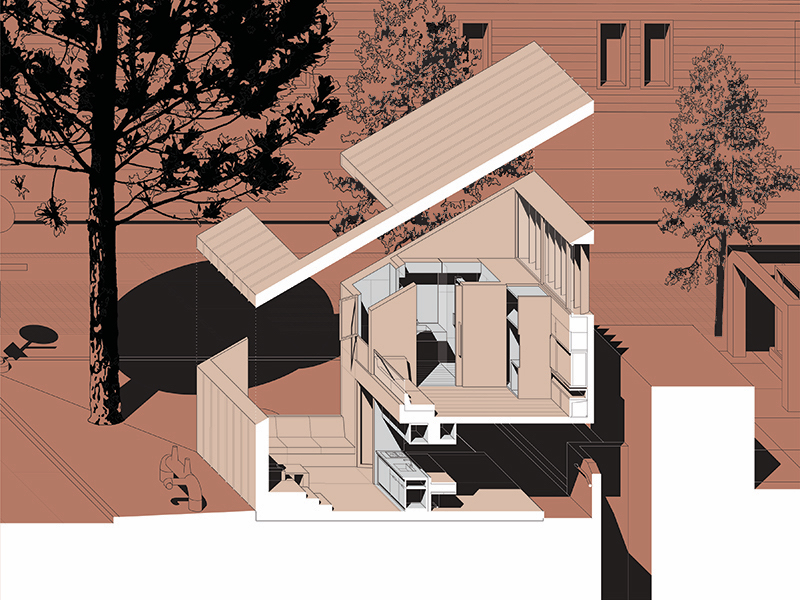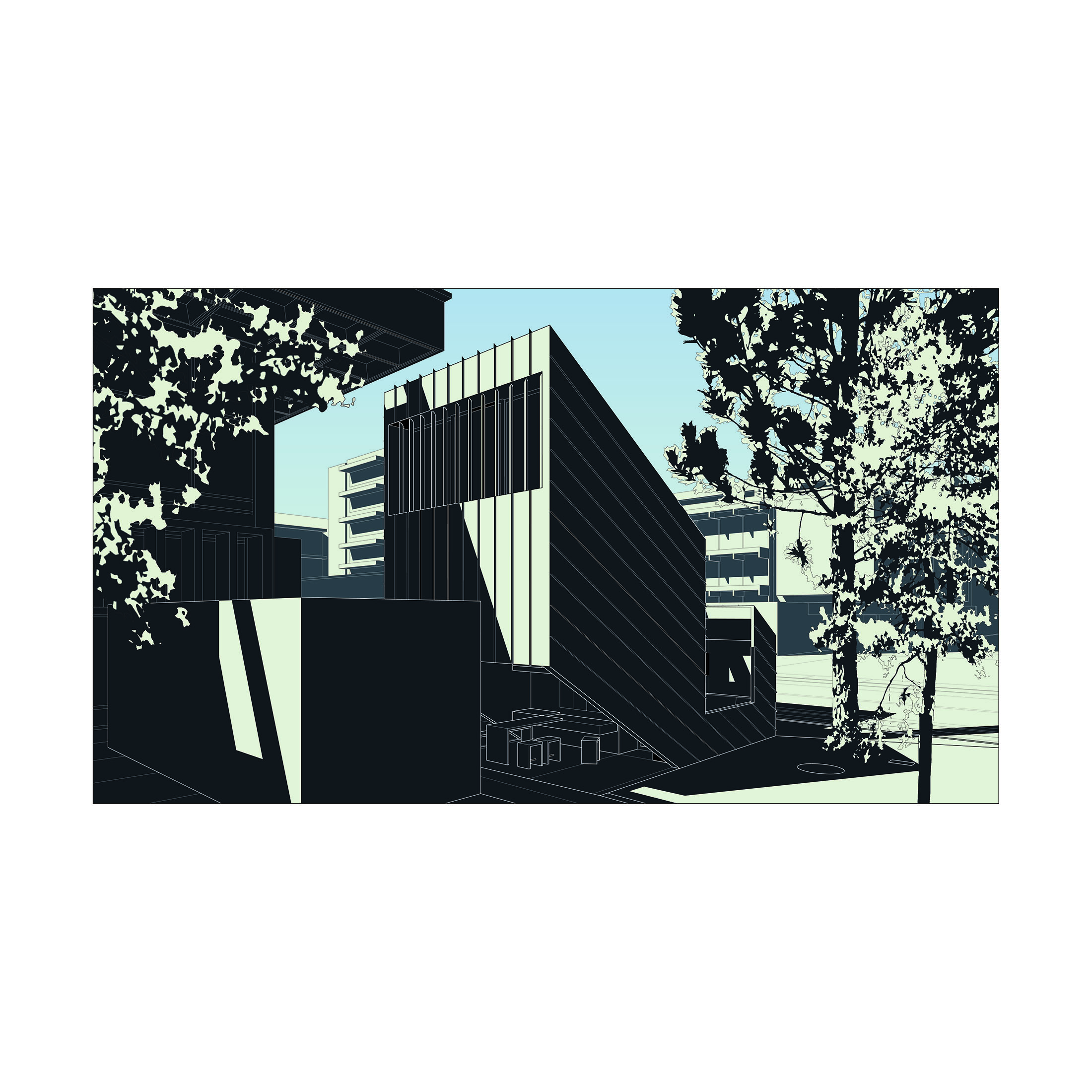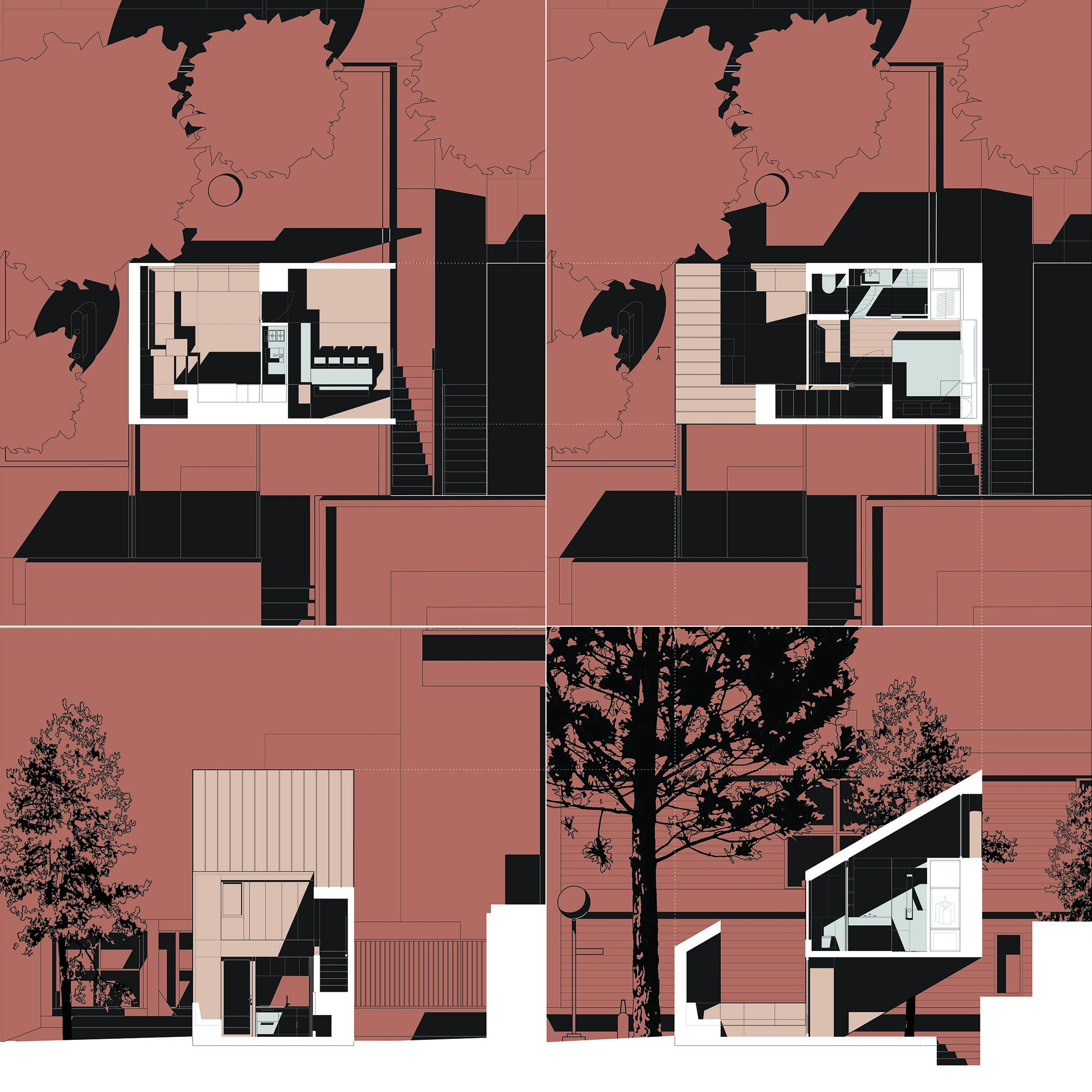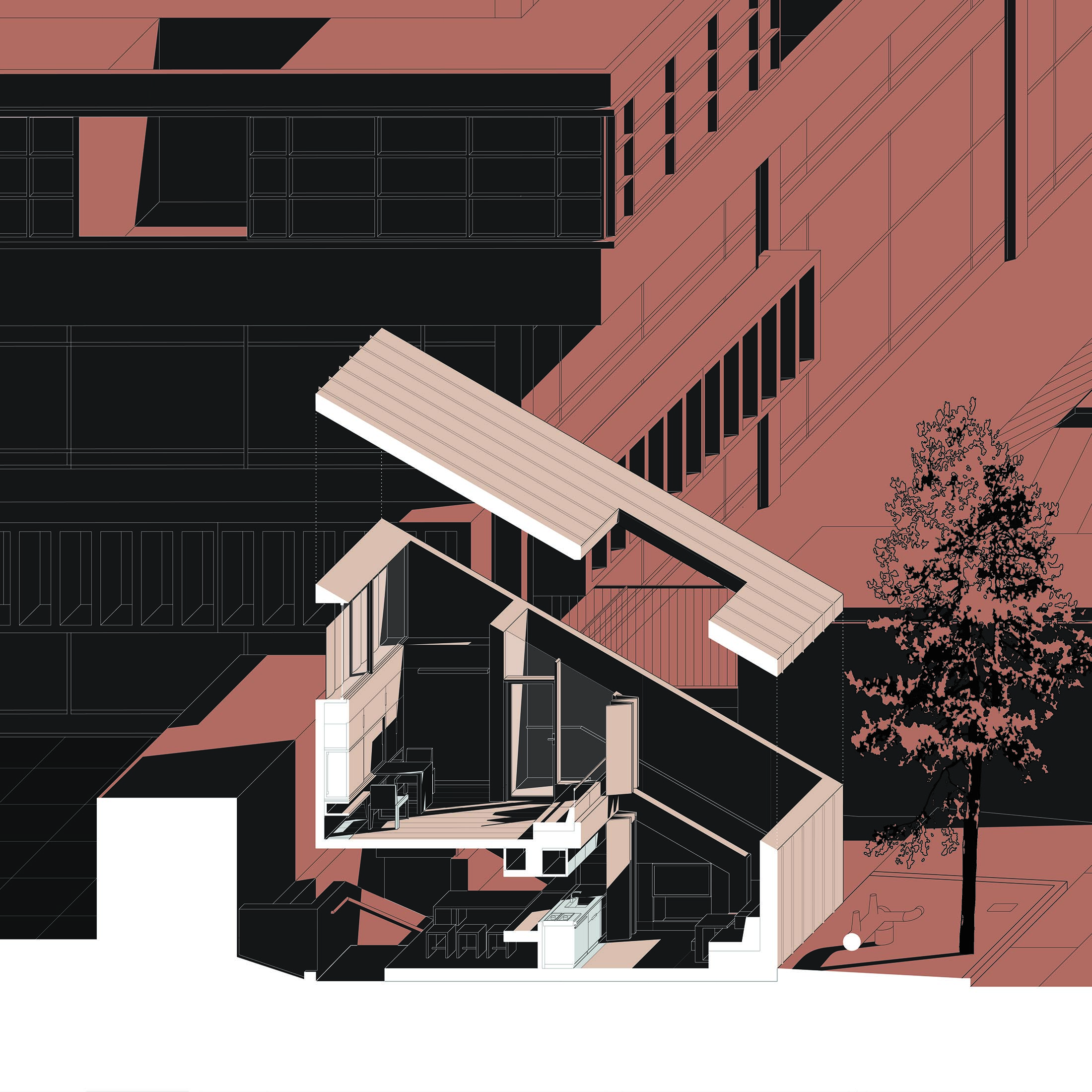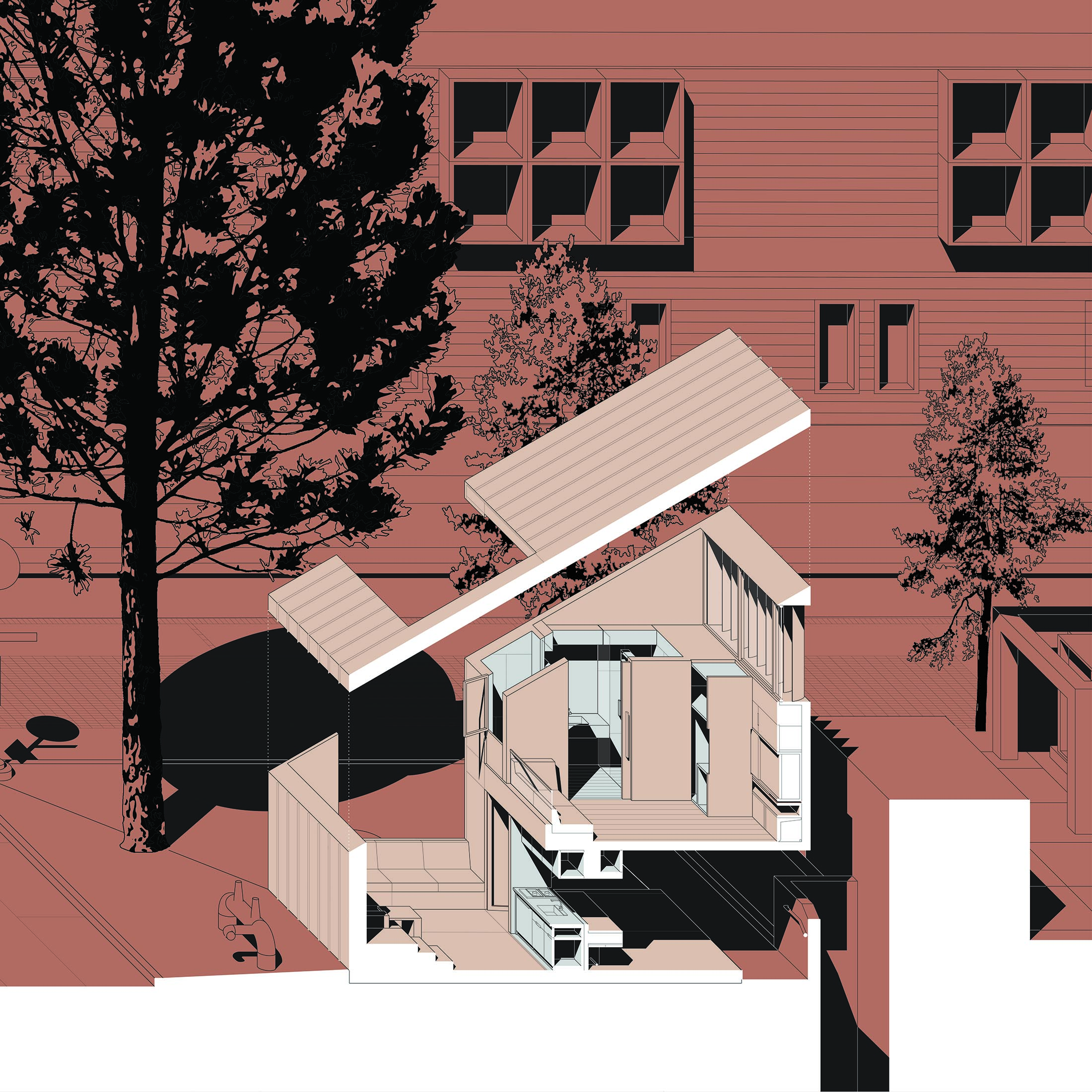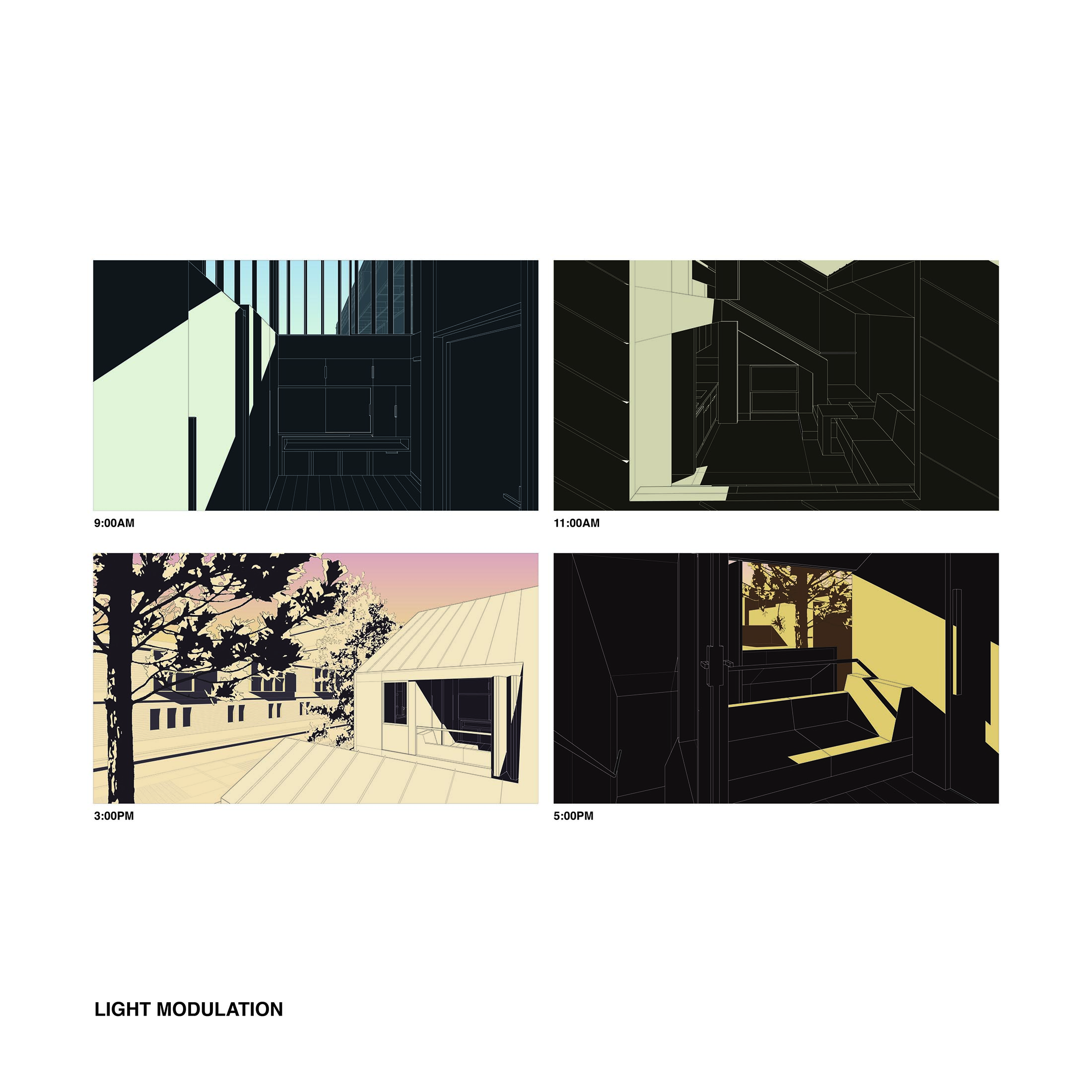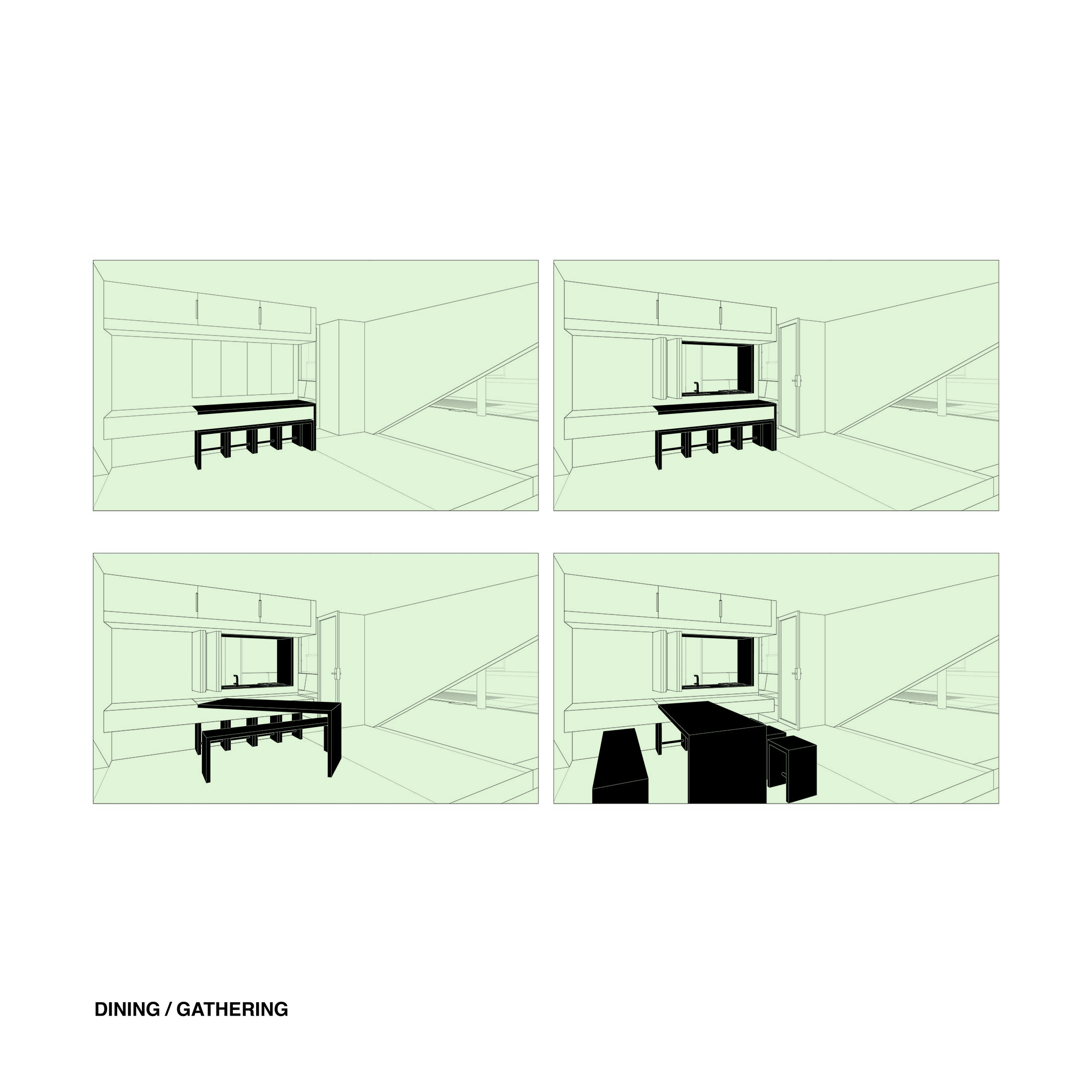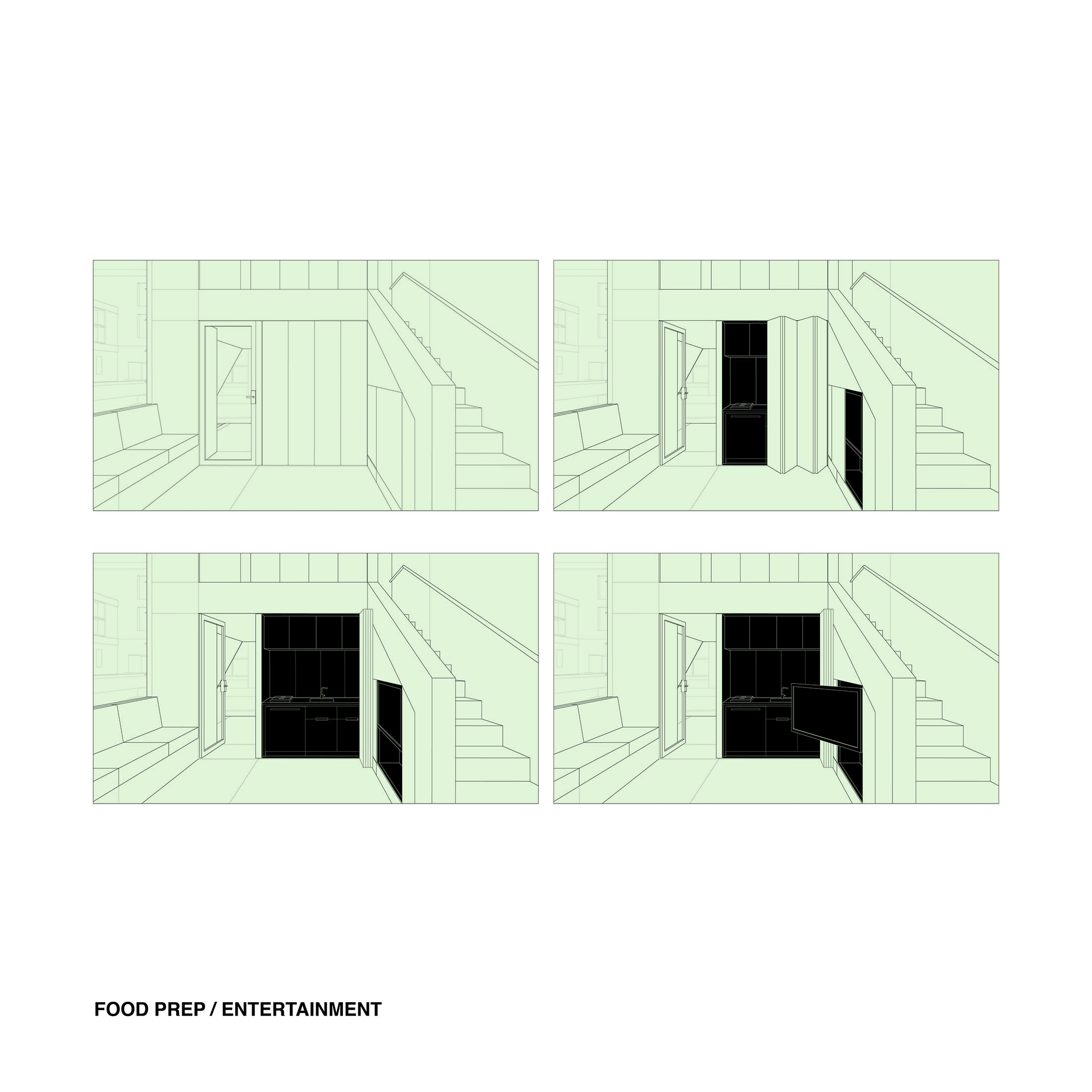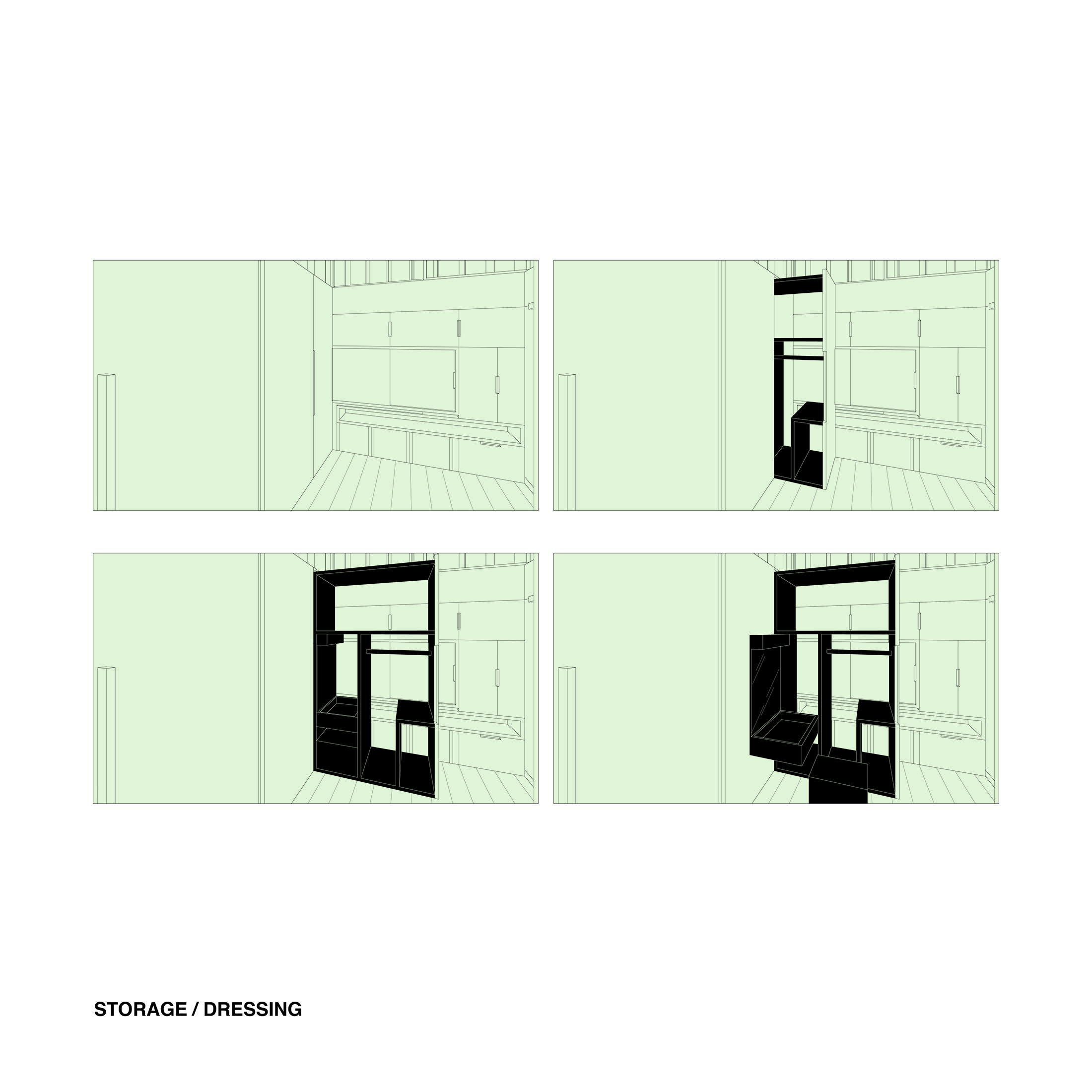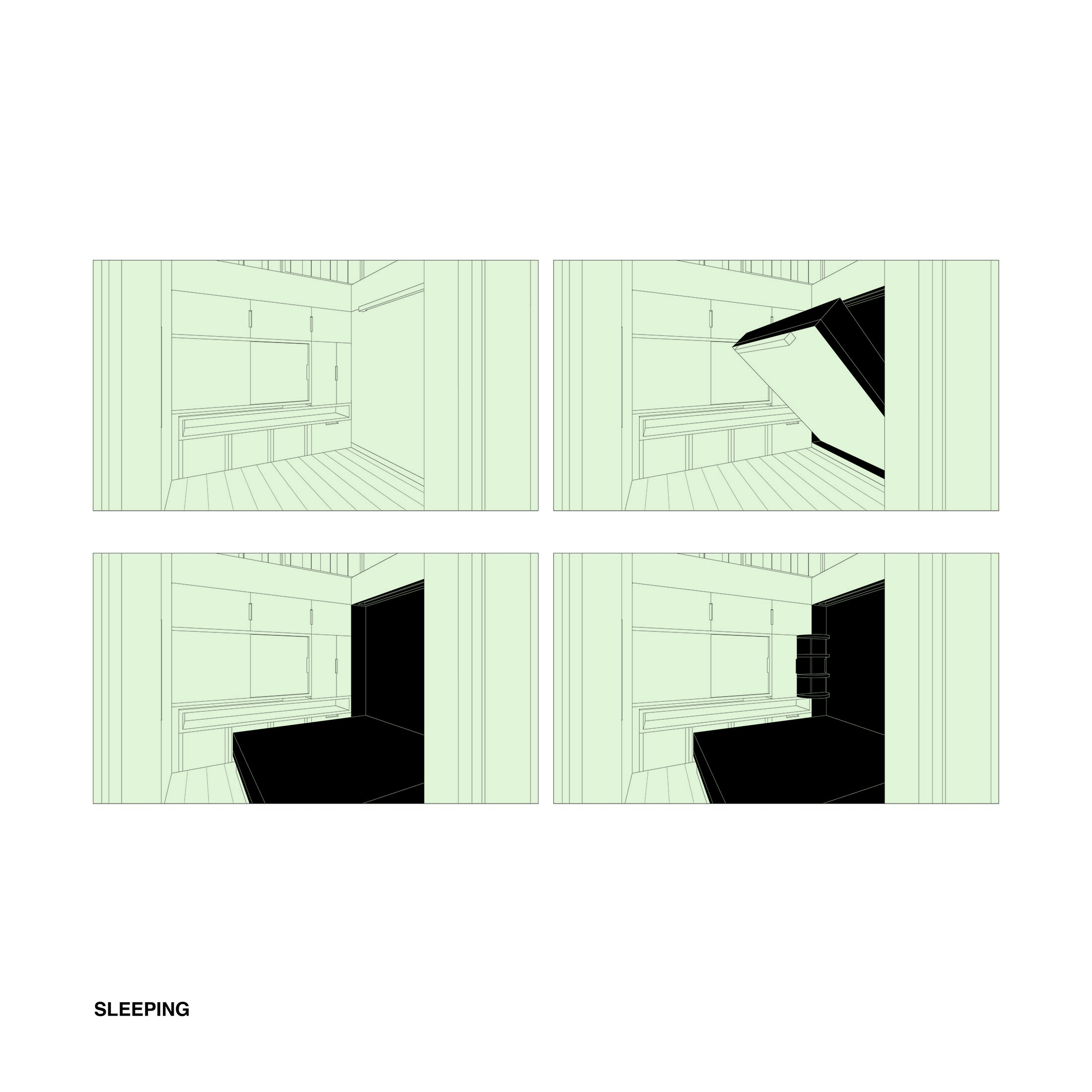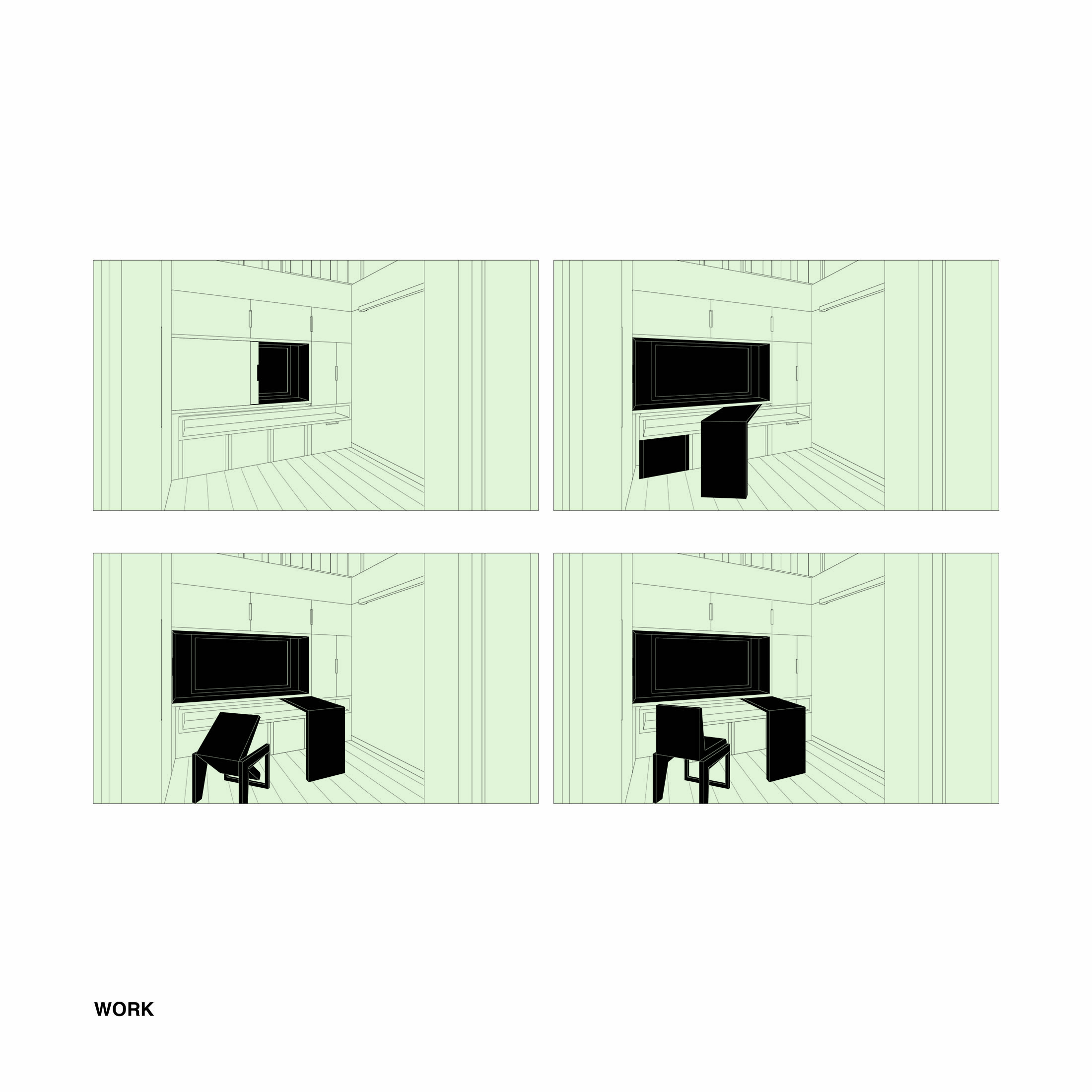Functional Poché + Flexible Space
This project for a university guest house began with a passage from Venturi’s Complexity and Contradiction in Architecture: “Residual space that is open might be called ‘open poche’ “ (p. 82). In his examples, he cites Kahn’s idea of “servant space” as well the poche in the walls of Roman and Baroque architecture as “alternative means of accommodating an inside different from the outside.” More recently, Rem Koolhaas describes a contemporary notion of poche their Y2K House. He writes: “With this design the entire house could also act as a big storage element that allowed the client to hide any mess.” Similarly, the intent with this micro-dwelling is to establish a dialogue between empty, flexible space and “functional poche” that contains the servant spaces as well as a set of hidden, transformable elements that slide, rotate and unfold in different ways, allowing the inhabitants to configure the space according to their various needs.
Formally, the point of departure was a simple rectilinear volume and a thickened wall that was Boolean’d to create a courtyard void, and then sheared and cantilevered to produce an extended threshold between inside and outside, establishing a visual connection with the 70 foot Canary Island palm tree on the northwest corner of the site. Finally, natural light is filtered by an oversized east-facing clerestory window with operable louvers, and in the north-facing courtyard it’s reflected and modulated through various openings and shutters.
